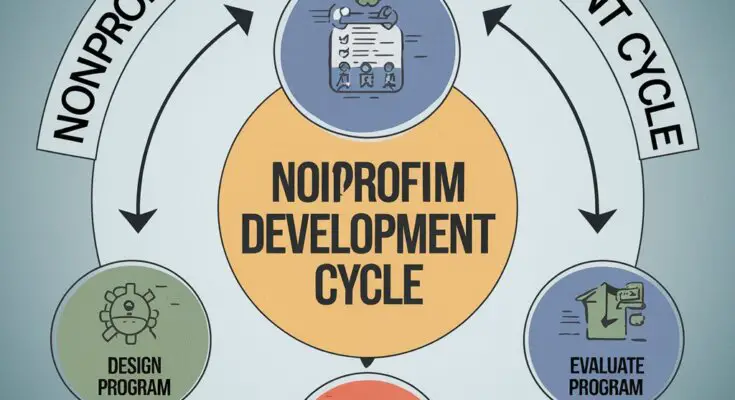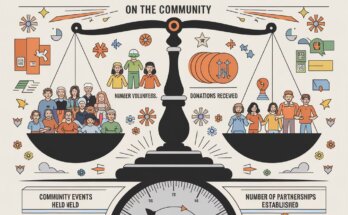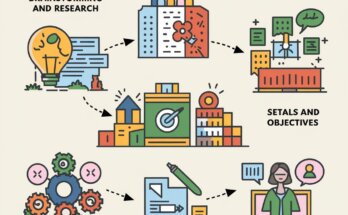When it comes to running a successful nonprofit, understanding the Nonprofit Program Development Cycle is crucial.
This cycle outlines the essential steps involved in creating and managing effective programs that fulfill your mission, while addressing the needs of your community.
What is the Nonprofit Program Development Cycle?
The Nonprofit Program Development Cycle is a systematic approach that nonprofits use to design, implement, and evaluate their programs.
This cycle typically consists of several key phases:
- Needs Assessment
- Program Design
- Implementation
- Evaluation
- Sustainability and Growth
Each phase is interconnected, and understanding this cycle will empower your nonprofit to develop impactful programs that align with your mission.
1. Needs Assessment
The first step in the program development cycle is conducting a needs assessment. This process involves identifying the specific issues and challenges your target community faces.
To effectively assess needs, consider the following strategies:
- Surveys and Interviews: Engage with community members through surveys or interviews to gather their insights. Ask open-ended questions to encourage detailed responses. For example, if your nonprofit focuses on youth development, consider asking parents about the challenges their children face in school.
- Focus Groups: Organize focus groups with stakeholders, including beneficiaries, community leaders, and volunteers. This collaborative approach can provide valuable qualitative data. If your organization addresses homelessness, gather a group of formerly homeless individuals to discuss their experiences and needs.
- Data Analysis: Utilize existing data from government reports, research studies, or local agencies to identify trends and gaps in services. For instance, if your nonprofit works in education, review local school performance data to determine where additional support is needed.
2. Program Design
Once you’ve identified the needs of your community, it’s time to move to the program design phase. This step involves crafting a clear and actionable plan to address those needs.
Here are some strategies to guide your design process:
- Define Program Goals and Objectives: Clearly articulate what you aim to achieve with your program. Use the SMART criteria—Specific, Measurable, Achievable, Relevant, and Time-bound—to set your objectives. For example, if you’re launching a literacy program, a SMART objective might be: “Increase reading proficiency among participants by 20% within one year.”
- Develop Program Activities: Outline the specific activities and services your program will provide. Consider the resources available, such as staff, volunteers, and funding. If your nonprofit is focused on mental health support, activities might include workshops, support groups, and one-on-one counseling sessions.
- Create a Budget: Develop a budget that outlines the costs associated with your program, including staffing, materials, and overhead. Be sure to explore potential funding sources, such as grants, donations, and partnerships.
A Nonprofit’s Journey
Let’s take a moment to highlight a story that illustrates the Nonprofit Program Development Cycle in action.
Meet Hope for Tomorrow, a nonprofit organization dedicated to empowering women through education and job training.
After conducting a thorough needs assessment, Hope for Tomorrow discovered that many women in their community struggled to secure stable employment due to a lack of skills and training.
With this information, the organization designed a comprehensive job training program that included resume writing workshops, interview preparation sessions, and skills training in various trades.
Through effective program design, they set a goal to help 100 women find employment within two years. With clear objectives in place and a budget that accounted for staffing and materials, they were ready to implement their program.
The success of Hope for Tomorrow demonstrates the importance of a well-thought-out program development cycle. By addressing real community needs and creating a structured plan, they were able to make a meaningful impact.
3. Implementation
With your program designed, it’s time to move into the implementation phase. This step is all about putting your plan into action.
Here are some key strategies to ensure successful implementation:
- Recruit and Train Staff: Ensure that you have the right team in place to deliver your program effectively. Provide thorough training to staff and volunteers to align everyone with your program’s goals and methodologies.
- Engage Participants: Actively involve your target audience in the program. Use marketing strategies to promote your program through social media, local events, and partnerships. For instance, if your nonprofit focuses on youth mentorship, host an open house to attract participants and their families.
- Monitor Progress: Establish a system for tracking progress during implementation. Collect data on participant attendance, engagement, and feedback. This information will help you make adjustments as needed and ensure your program remains on track.
4. Evaluation
After implementing your program, it’s crucial to evaluate its effectiveness. This phase allows you to assess whether you achieved your goals and identify areas for improvement. Consider these evaluation strategies:
- Collect Feedback: Gather feedback from participants, staff, and stakeholders through surveys and interviews. Ask open-ended questions to encourage honest responses. For example, after a workshop, ask participants what they found helpful and what could be improved.
- Analyze Outcomes: Compare your program’s outcomes against your initial goals. Use quantitative data (e.g., participation rates, test scores) and qualitative data (e.g., testimonials) to evaluate success. If your program aimed to improve literacy skills, measure the reading levels of participants before and after the program.
- Adjust as Necessary: Based on your evaluation findings, make necessary adjustments to your program. This could involve refining activities, reallocating resources, or providing additional training for staff.
5. Sustainability and Growth
The final phase of the program development cycle is ensuring sustainability and exploring growth opportunities. Here are some strategies to consider:
- Develop Partnerships: Collaborate with other organizations, businesses, and community leaders to enhance your program’s reach and impact. For instance, if your nonprofit focuses on environmental education, partner with local schools to integrate your program into their curricula.
- Diversify Funding Sources: Seek out multiple funding streams, including grants, donations, and sponsorships. Consider organizing fundraising events or launching a crowdfunding campaign to support your program’s sustainability.
- Share Success Stories: Communicate your program’s impact to stakeholders, donors, and the community. Use storytelling to share success stories from participants. This not only builds trust but also encourages ongoing support for your program.
Share Your Thoughts!
Now that we’ve explored the Nonprofit Program Development Cycle, we want to hear from you! What challenges have you faced in your program development efforts? Share your experiences in the comments below, and let’s discuss potential solutions together.
Conclusion
Understanding the Nonprofit Program Development Cycle is vital for any organization looking to create impactful programs. By following these steps—you can make a significant difference in your community.
We encourage you to subscribe to the Nonprofit Navigators Newsletter for more expert tips and resources.
By subscribing, you’ll gain access to exclusive opportunities, including job postings, grant opportunities, webinars, and events designed to support nonprofits like yours.
Join us on this journey to empower your organization and make a lasting impact!
>>>>Additional Resources>>>>>
- The Small Business’s Guide to Winning Grants
- Request for Proposal Success: How to Write Proposals That Win
- The Ultimate Guide to Federal Grant Applications: Techniques for Success
- Digital Marketing for Nonprofits: A Comprehensive Guide to Boosting Your Impact Online
- Mastering Online Fundraising: A Nonprofit’s Guide to Digital Success




